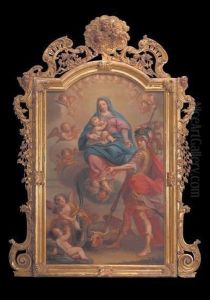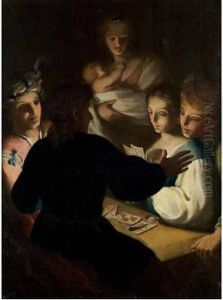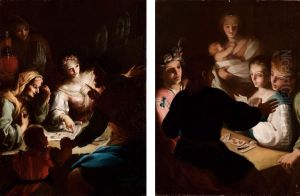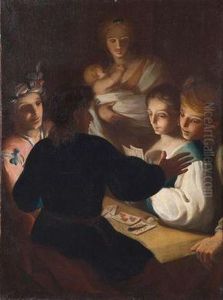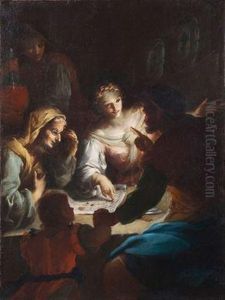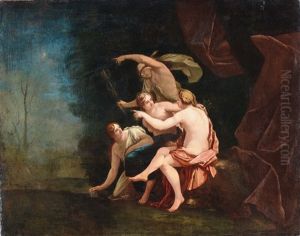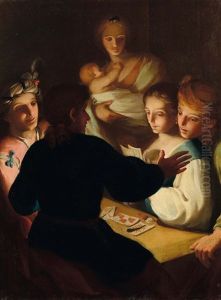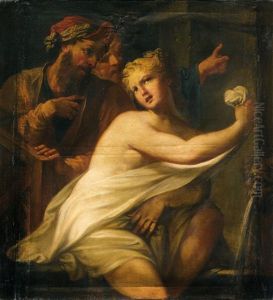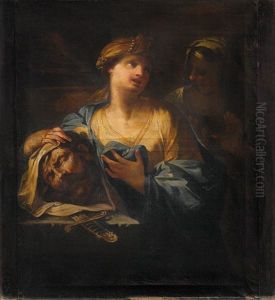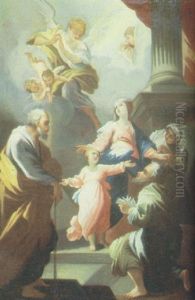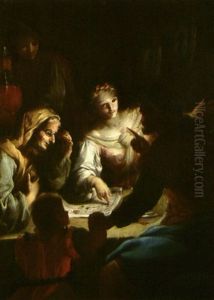Clemente Ruta Paintings
Clemente Ruta was a prominent Italian sculptor and architect born in 1669 in Parma, Italy. His work is often associated with the Baroque period, a time characterized by dramatic expression and elaborate decoration. Ruta's contributions to art and architecture were primarily in the service of the church and the aristocracy, reflecting the grandeur and the religious fervor of the time. Throughout his career, Ruta developed a style that balanced between the ornate qualities of the Baroque and the emerging sensibilities of the Rococo.
Ruta's early life was steeped in the artistic traditions of Parma, a city known for its rich cultural heritage. He was trained by local masters and quickly gained recognition for his skill in sculpting marble and other materials. His talent for creating dynamic, lifelike figures and his ability to imbue his works with emotional depth set him apart from his contemporaries. Ruta's sculptures often depicted religious scenes and figures, capturing the spiritual intensity and the human drama of biblical stories.
As an architect, Clemente Ruta also made significant contributions. His architectural works included designing elaborate altarpieces, chapels, and religious buildings. His designs were marked by their intricate details and the harmonious integration of sculpture into the architectural framework. Ruta's ability to blend sculpture and architecture seamlessly is considered one of his major achievements, exemplifying the holistic approach to art that was typical of the Baroque period.
Throughout his career, Ruta received commissions from high-ranking church officials and members of the nobility, both in Parma and beyond. His works not only decorated churches and palaces but also served as a testament to the power and piety of his patrons. Despite his success, much of Ruta's life and work remained centered in Parma, where he contributed significantly to the city's artistic legacy.
Clemente Ruta passed away in 1752, leaving behind a body of work that continues to be admired for its artistic excellence and its embodiment of the Baroque spirit. His sculptures and architectural designs are considered important examples of the period's art, reflecting the complex interplay between faith, emotion, and beauty that characterized the era. Ruta's legacy is preserved in the collections of museums and in the architecture of Parma, serving as a lasting tribute to his talent and vision.
